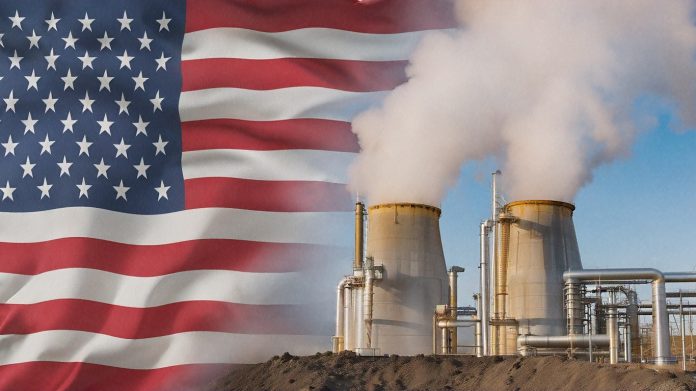The United States Department of Energy (DOE) has announced an investment of up to $31m to support six innovative renewable geothermal energy projects across the country.
These initiatives aim to advance enhanced geothermal systems (EGS) and explore new methods of energy storage, aligning with the US’ broader goals of reducing emissions and bolstering the clean energy sector.
Secretary of Energy Jennifer Granholm emphasised the significance of the initiative: “Expanding the use of new and innovative geothermal technologies will allow the United States to continue pushing forward into the frontier of the clean energy revolution by using the heat beneath our feet.”
Revolutionising geothermal energy
Currently, geothermal energy contributes around four gigawatts to the US electricity grid. However, the DOE estimates that the expansion of EGS could unlock up to 90 gigawatts of reliable, flexible power by 2050, enough to supply energy to over 65 million American homes.
EGS technology involves creating artificial underground reservoirs to extract heat from the Earth’s subsurface, which can then be converted into electricity.
While geothermal heat is abundant, many locations lack the natural water or fluid flow needed to recover this energy efficiently. EGS addresses this issue by enabling the extraction of heat in areas where traditional geothermal methods are not feasible.
Another key focus of the DOE’s funding is the development of reservoir thermal energy storage (RTES) technology.
Unlike conventional batteries that store electrical energy, RTES stores heat energy directly in underground reservoirs, offering a valuable solution for industries that require high amounts of thermal energy, such as chemical production and food processing.
Overview of selected projects
The DOE has allocated $4.88m to Clemson University in South Carolina for the development of an AI-powered photoacoustic imaging tool. This tool will be used for high-temperature and high-pressure well logging, assessing geothermal well integrity without the need for active cooling.
In Houston, Texas, Innovative Downhole Solutions Inc. received $2.51m to create a durable ultrasonic measurement tool. This tool is designed to operate continuously for 24 hours in high-temperature geothermal environments, evaluating wellbore construction materials and practices.
Lawrence Berkeley National Laboratory in California has been awarded $2.02m to develop a tool specifically for evaluating geothermal borehole integrity. This tool is engineered to function in extreme conditions without relying on downhole electronics.
Los Alamos National Laboratory in New Mexico has secured $3.67m to create a high-resolution acoustics-based tool. This tool will deliver precise data for assessing the components of EGS under extreme conditions.
Schlumberger Technology Corporation in Houston, Texas, was granted $10m to develop a wireline tractor-conveyed system. This system will focus on long-term integrity modelling of cement and casing in geothermal wells.
Finally, Project Development Solutions, Inc. in Bakersfield, California, received $7.9m to pilot an RTES demonstration project at the Kern Front Oil Field. This project will pair subsurface geothermal reservoirs with a steam system and process heat off-taker.
The advantages of renewable geothermal energy
Renewable geothermal energy offers several significant advantages as a renewable energy source. Unlike solar or wind energy, which depend on weather conditions, geothermal energy provides a consistent and reliable power supply.
It also requires less land and water compared to other energy sources and emits very low levels of greenhouse gases, making it an environmentally friendly option.
By investing in geothermal technologies, the US is making strides towards its clean energy goals while also enhancing energy security and creating economic opportunities.
The DOE’s recent investments in EGS and RTES underscore the nation’s commitment to leveraging renewable geothermal energy as a key component in the fight against climate change and the push for sustainable innovation in the energy sector.









